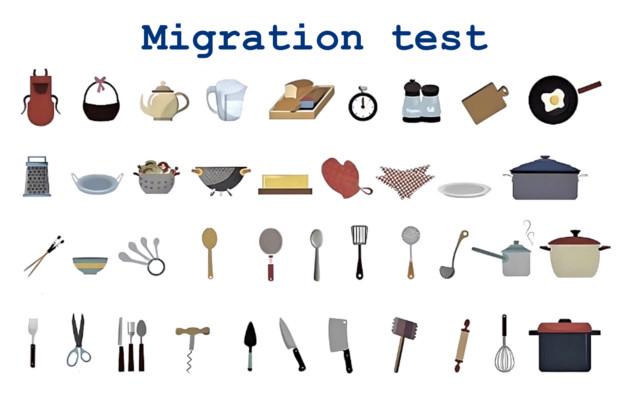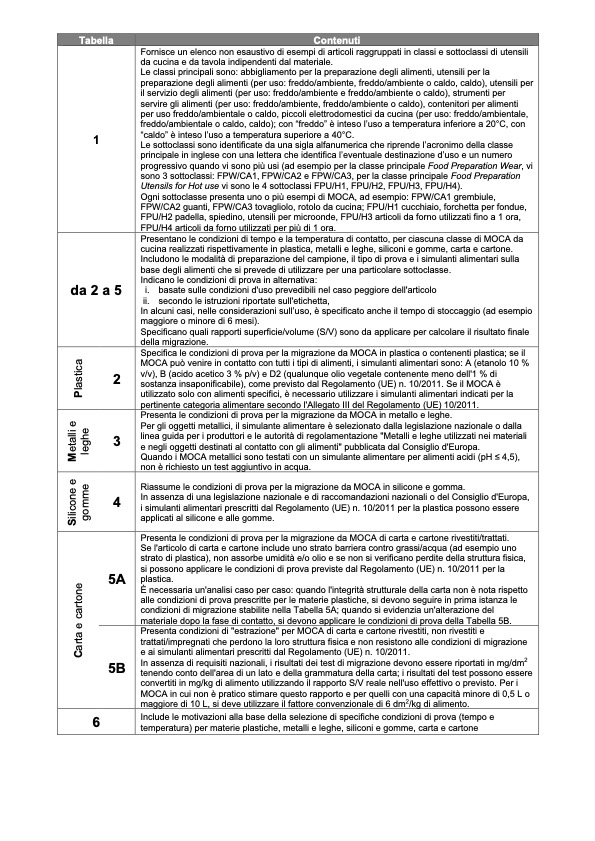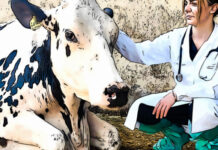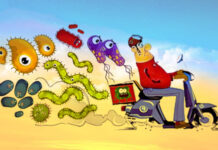JRC (Joint Research Center) published the fourth edition of the guidelines defining the test conditions of kitchenware (food contact materials) made of plastics, silicone and rubber, metals, paper and paperboard, for the purpose of comparability of the results of analyses conducted by EU member state authorities as part of official controls. (1,2,3)
The document-authored by the EU Reference Laboratory for Food Contact Materials (EURL-FCM), in synergy with the National Reference Laboratories (NRLs)-is dedicated to Materials and Objects intended for Food Contact (MOCA) for household use. Also as a basis for analysis on items intended for professional and industrial use, where temperature and contact times may vary.
1) Food Contact Materials, the context of the rules in the European Union.
The European Commission led by Ursula von der Leyen-as noted (4,5)-has failed to carry out the long-awaited organic reform of EU rules on Food Contact Materials. These still represent jeopardized legislation, a ramshackle regulation based on:
– General criteria, introduced by the Food Contact Materials Regulation (EU) No 1935/04, (6)
– Harmonized rules on plastics only, including recycled materials (7.8).
The regulation of every other category of food-contact materials-e.g., metals (9,10,11), wood (12), rubbers and silicones (13), paper and cardboard (14,15), printing inks (16)-remains, however, in the hands of rare national regulations, or Council of Europe recommendations where available.
2) The role of European and national reference laboratory guidelines.
The work of EURL-FCM and NRLs helps to fill, at least in part, the serious gaps highlighted above. Indeed, the guidelines under review are part of a broader EURL-FCM and NRLs work on food contact materials, with the dual purpose of defining:
– Shared technical specifications for performing official controls, in accordance with Official Controls Regulation (EU) No 2017/625 (2,3)
– Harmonized ways of performing compliance testing on food contact materials (FCM).
Supply chain operators and control authorities-in the absence of specific rules on various materials-can therefore refer to the test conditions provided in the EURL-FCM and NRLs guidelines. Also for the purpose of the application of the General Product Safety Regulation (EU) No 2023/998 (see paragraph 4 below). These guidelines, while not legally binding, do in fact express a qualified scientific consensus on:
– contaminants and toxic chemicals to be analyzed to ensure the safety of food contact materials and thus public health (17,18),
– test conditions (and thus food simulants to be used, temperatures and contact times) to verify the migration of hazardous substances in various foods.
3) Kitchenware, test conditions for official controls in EU
Test conditions for kitchenware are based on the foreseeable ‘worst cases‘ in terms of temperature and contact times of food with various materials. Therefore, the following are considered:
– consumers’ expectations of how to use kitchen items based on their appearance, shape, materials, functionality. Rather than referring only to manufacturers’ claims,
– the tendency of consumers to make the same use of a specific tool, regardless of the material it is made of. The guidelines thus recommend, where possible, identical test conditions for different materials.
3.1) The materials considered
Plastics and kitchenware containing plastics. EURL-FCM and NRLs also refer to the principles and criteria laid down in Reg. (EU) No 10/2011 (Annex V, paragraphs 2.1.3, 2.1.4, 3.1) to define test conditions for other materials.
Metals and alloys. Reference is made to the recommendation ‘Metals and alloys used in food contact materials and articles,’ published by the Council of Europe,
Paper and cardboard. Again, a Council of Europe recommendation, ‘Paper and Board used in food contact materials and articles,’ is cited,
Silicone and rubber. In the absence of European rules and recommendations, the criteria established for plastics apply.
Paper and cardboard represent the newest addition to this version of the guideline. Because food contact materials made of paper or cardboard often do not withstand test conditions and food simulants provided for plastics, EURL-FCM and NRLs indicate alternative test conditions.
3.2) Analysis criteria
The tables distinguish ‘main class’ and ‘subclass’ of the different materials considered. The current rules, however, beyond rare cases, do not include exhaustive and exhaustive lists of materials that can be used in the manufacture of food contact materials. As a result, FCMs (MOCAs) made of materials not considered in the tables remain without harmonized test conditions.
The analysis criteria to be applied to migration tests include other useful elements to ensure the effectiveness and comparability of test results, such as:
– sample preparation. Depending on the case, it is recommended that tests be performed on intact, cut kitchen items or parts thereof,
– type of evidence. Under different circumstances, tests are carried out by filling the article or total immersion of FCMs (MOCAs) in food simulants, analysis on the migration cell. That is, actual use is considered, for kitchen items assembled and considered as a single piece (as separation of components proves difficult and it is anticipated that operating conditions may be different from the ‘worst foreseeable conditions of use’),
– type of simulant. It has regard to the food simulants listed in Annex III of Reg. (EU) 10/2011. That is, simulant A ethanol 10% (v/v), simulant B acetic acid 3% (w/v), simulant C ethanol 20% (v/v); simulant D1 ethanol 50% (v/v), simulant D2 vegetable oil, simulant E poly(2,6-diphenyl-p-phenylene oxide),
– considerations of the surface-to-volume ratio to be used in calculating the result. E.g. real ratio, as provided for in Article 17 of Regulation (EU) No. 10/2011; real child/young person, 6 dm2/kg of food for small (volume < 0.5L) or very large (volume > 10L) FCMs, i.e., when it is difficult to determine the amount of food coming into contact.
3.3) Tables
The contents of the tables in the document under review are summarized in the diagram below.
3.4) Selection of test conditions and food simulants.
The shape, material, and functionality of an FCM for use as a household kitchen utensil affect the determination of its foreseeable use by the end consumer. It is considered that in most cases the use of a tool is the same, regardless of the material in which it is made. The same test conditions are therefore recommended-generally and subject to appropriate notes on metals, paper and cardboard-for different food contact materials.
If proposed food simulants are not appropriate for the material, specific migration tests should be performed on food. The relative results outweigh those obtained in food simulants.
The selection of test conditions and food simulants follows the approach described in the decision tree below.
4) General Product Safety Regulation (EU) No 2023/998
The safety of kitchen items and utensils, as well as the generality of materials and objects intended to come into contact with food, it should be noted, is now also subject to the requirements introduced by the General Product Safety Regulation (EU) No 2023/998. (19)
Dario Dongo and Paolo Rebolini
Notes
(1) Beldi, G., Senaldi, C., Robouch, P. and Hoekstra, E., Testing conditions for kitchenware articles in contact with foodstuffs: plastics metals, silicone and rubber, paper and board. https://tinyurl.com/ycy4m7yy Publications Office of the European Union, Luxembourg, 2023. doi:10.2760/80698, JRC134290
(2) Dario Dongo, Giulia Torre. Official public controls, EU Regulation 2017/625 kicks off. GIFT (Great Italian Food Trade). 18.12.19
(3) Dario Dongo, Giulia Pietrollini. Official controls, European Commission guidelines on reg. EU 2017/625. GIFT (Great Italian Food Trade). 2.1.23
(4) Marta Strinati. Food contact materials, reform-slug slips again. GIFT (Great Italian Food Trade). 17.2.20
(5) Marta Strinati, Dario Dongo. EU Consultation on MOCAs. The position of ISS. GIFT (Great Italian Food Trade). 20.1.21
(6) Dario Dongo. Contact materials, safety issue. GIFT (Great Italian Food Trade). 27.9.18
(7) Luca Foltran. Contact materials, plastics. The new regulation. FARE(Food and Agriculture Requirements). 6.2.18
(8) Marta Strinati. Recycled plastic in food packaging, new EU regulation. GIFT (Great Italian Food Trade). 16.9.22
(9) Dario Dongo, Luca Foltran. Stainless steel in MOCAs, Ministry of Health decree and gaps in Europe. GIFT (Great Italian Food Trade). 2.8.19
(10) Dario Dongo. Bronze-drawn pasta? Antitrust collects information. GIFT (Great Italian Food Trade). 24.7.21
(11) Marta Strinati. Aluminum and food, how to reduce the risk of contamination. GIFT (Great Italian Food Trade). 19.12.19
(12) Dario Dongo. Brass, wood, and other food contact materials. GIFT (Great Italian Food Trade). 2.8.21
(13) Marta Strinati. Safety of silicone baking molds, tests on 44 products. GIFT (Great Italian Food Trade). 9.1.23
(14) Dario Dongo, Luca Foltran. Contaminants in food contact materials, paperboard and inks. BEUC Report. GIFT (Great Italian Food Trade). 1.8.19
(15) Marta Strinati. Paper and cardboard food packaging, toxic substances in 80% of cases. GIFT(Great Italian Food Trade). 2.2.21
(16) Dario Dongo, Luca Foltran. Printing inks in MOCAs, regulatory experiences in Europe. Waiting for common rules. FARE(Food and Agriculture Requirements). 26.3.17
(17) Marta Strinati. OpenFoodTox, the EFSA database on chemicals in food and feed. GIFT (Great Italian Food Trade). 3.8.21
(18) Marta Strinati. Endocrine disruptors, a new database reveals Brussels’ omissions. GIFT (Great Italian Food Trade). 12.6.20
(19) Dario Dongo, Alessandra Mei. General Product Safety Regulation, at the starting tape in the European Union. THE ABC’S. GIFT (Great Italian Food Trade). 13.5.23











